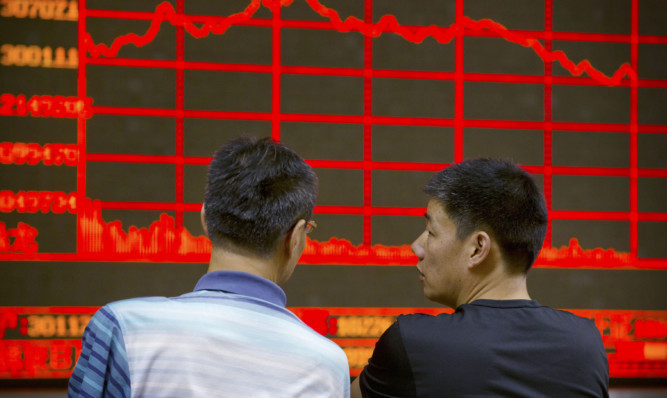The point at which UK interest rates begin to rise will be “put even further back” as countries around the world respond to China’s slowing economy, the former chairman of the Financial Services Authority has suggested.
Crossbench peer Lord Turner of Ecchinswell predicted the Chinese slowdown would “push back” the point where the Bank of England puts up interest rates.
The FTSE Index bounced back above the 6,000 mark after surging by nearly 2% as it recovered following one of its worst sessions in recent years.
Investors on Monday had been reacting to the latest stock market rout in China.
Lord Turner told BBC Radio 4’s Today programme: “Well I think what will happen as the inevitable consequence of the China slowdown, and the most important bit here is the very big slowdown of the economy rather than the fall in the equity prices, I think in response to that we will see that the point at which interest rates rise will be put even further back.”
Asked how far into the future was the prospect of a rate rise in Britain, he said: “I don’t know. I’m always very wary of predicting the precise point at which interest rates rise.
“But what I will say is I think we are in deeply deflationary times, I think what has happened in China was in a sense predictable and indeed predicted.”
He added: “I think the consequence of that is whenever is the first move up in interest rates, there will be very few and the rate of increase will be shallow.
“So if you were to say what will interest rates be in 2017/2018, I would be very surprised if the UK or US interest rates will be more than 2 or 2.5% even by 2018 and I think across a lot of the rest of the world, in Europe, in Japan they will effectively be zero.”
In Britain over the last six years, he said, the level of company debt and household debt had slowly begun to go down, but the increase in public debt had “more than offset that”.
He said: “The crucial thing about debt is that once we have too much of it in the economy, we really don’t know how to get rid of it rather than simply shift it around the economy.”
He added: “We do face a fundamental problem I think in the world that we piled up before 2008, primarily actually at that time on the private side, not the public side so much debt that we really don’t know how to get rid of it now.”
